Real Life Accident: A/B Falls And Gets Injured During Crane Maintenance
Real Life Accident: Planned maintenance of the provision crane was in progress on a tanker which was anchored in slight sea conditions. Before commencing the work, the Bosun and the two assigned crew held a toolbox meeting. A working aloft permit was issued prior to commencing the task and the assigned team donned proper PPE. They raised the electro-hydraulic crane jib from its stowing crutch (located on the funnel casing), and, with its jib fully extended, slewed it forward to fully span over the bridge deck. For access, they rigged a portable 6-metre aluminium ladder from the bridge deck to reach the jib girder.
With the top section of the ladder secured to the crane jib, the A/B ascended to the top rung of the ladder and attempted to pass the fall restraining line of his safety harness around the crane jib. Due to the large dimensions of this section of the jib girder, the A/B had to lean out from his precarious perch to grab the free end hook of the line. Suddenly, the ladder became unstable, and the A/B lost his balance.
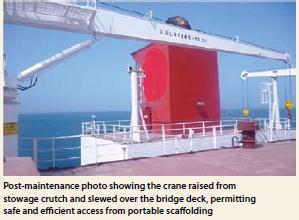
With no restraining line attached to the crane, he fell off the ladder and landed heavily on the deck. The Bosun and the second A/B attended to the injured person immediately, who was unconscious for a few minutes. He continued to breathe, and after regaining consciousness, his responses were normal and he could move all limbs except his right arm. Apart from concussion, and suspected fracture of right elbow, there appeared to be no other internal or external injuries. The emergency team removed the casualty to the ship’s hospital, where it was noticed that his blood pressure was low and he was showing signs of dizziness and body tremors. On radio medical advice, a launch was arranged to transfer the casualty to a shore hospital and an accident report was sent to the designated person (DPA) in the shore management office.
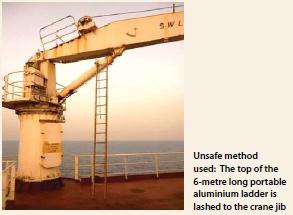
Results of investigation
1 A proper risk assessment was not conducted due to perceived lack of time;
2 During the toolbox meeting, the Bosun explained the precautions to the assisting crewmembers;
3 It was considered that there was sufficient number of crew assigned for the job and they had all donned proper PPE;
4 The work team was sufficiently rested before starting the work;
5 It was established that working on the crane jib from a portable ladder was patently unsafe and a safer access to the jib was available by slewing the jib over the adjacent compass (monkey island or flying bridge) deck;
6 It was determined that if the other A/B had positioned himself on the crane jib girder by climbing on to it from the crane pedestal, he could have safely secured the casualty’s lifeline.
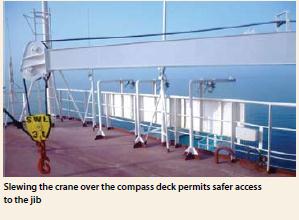
Root cause/contributory factors
1 Substandard acts
a. Incorrect use of equipment;
b. Failure to secure;
c. Improper position of task.
2 Substandard conditions
a. Inadequate guards or barriers;
b. Hull and structure condition.
3 Personal factors
a. Restricted range of body movement;
b. Poor judgement;
c. Lack of coaching.
4 Job factors
a. Inadequate work planning or programming;
b. Inadequate instructions, orientation or training;
c. Inadequate or improper controls;
d. Inadequate assessment of needs and risks;
e. Inadequate standards and specifications;
f. Inadequate monitoring of compliance;
g. Inadequate conduct that is not condoned, intentional or unintentional.
Control action needs
a. Work performance observations;
b. Work permits systems (although working aloft check list was completed, risk assessment had not been performed);
c. Enforcement of standards;
d. Health and hazard control.
Corrective/preventative actions
1 A fleet alert sent to all vessels on the incident requiring Masters to confirm full discussion and understanding of incident among all on board;
2 SMS amended to include new checklist to rectify procedural lapses exposed by this incident;
3 A visual training programme was distributed throughout the company and fleet highlighting safe working procedures for crane maintenance;
4 New officers and those on leave will be briefed on this case at the earliest opportunity;
5 The knowledge, understanding and proper implementation of these actions will be verified during internal audits and superintendent visits.
Lessons learnt
1 This accident again shows the importance of Planned Maintenance System (PMS) toolbox meetings. PMS toolbox meetings must be held with all crew related to each task. Risks and precautions shall be discussed and understood well by all team members;
2 Pre-task procedures for tasks subject to working aloft / overside shall be carried out with more attention and care. PPE should be donned correctly all the time. In addition to this safety of all other equipment related to tasks shall be maintained and tasks shall be monitored at all times.
Editor’s note: Maintenance work on lifting gear requires a stable and secure platform, particularly if the work is to be performed at heights exceeding 2 metres above the deck. Senior officers on board and shore management teams must consider equipping the vessels under their care with a reasonable quantity of scaffolding materials of suitable design and strength for greater safety and efficiency.
References: Mars Reports
Do you have info to share with us ? Suggest a correction
- Real Life Incident: Vessel Collision in Good Visibility
- Real Life Incident: Severe Injury To Deck Crew While Leaving Berth
- Real Life Incident: Departure Damage in Very Restricted Waterway
- Real Life Incident: Low Situational Awareness Has High Impact Consequence
- Real Life Incident: Fouled Anchor in a Designated Anchorage
- Real Life Incident: Fire On Barge Carrying Scrap Metal Causes $7 Million Worth Of Damage
Latest Case studies Articles You Would Like:
Subscribe To Our Newsletters
By subscribing, you agree to our Privacy Policy and may receive occasional deal communications; you can unsubscribe anytime.







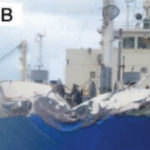


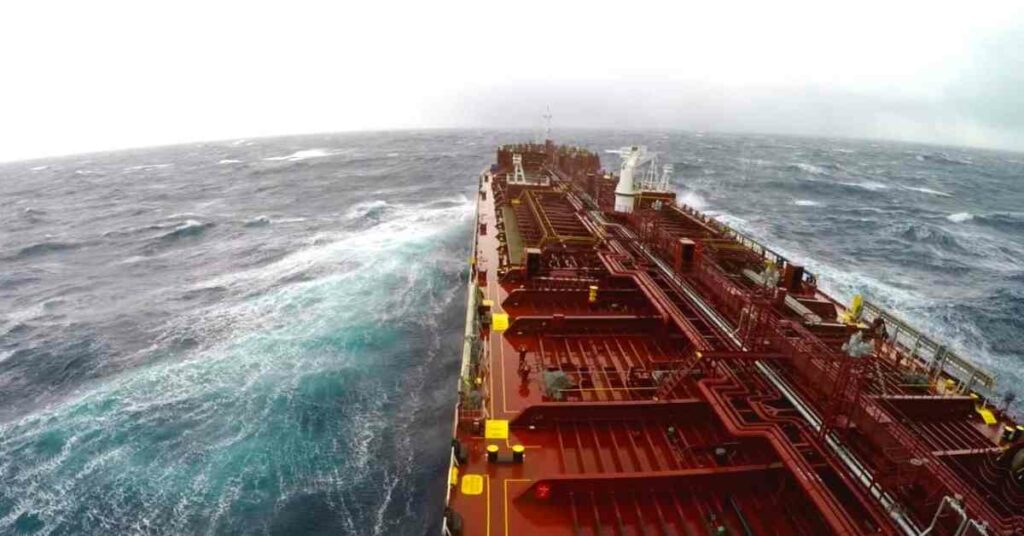
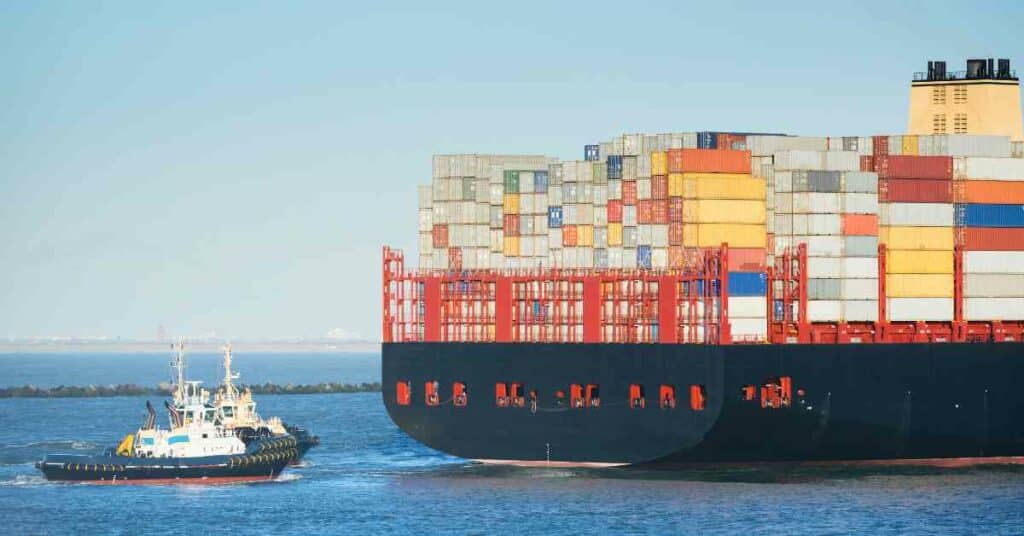
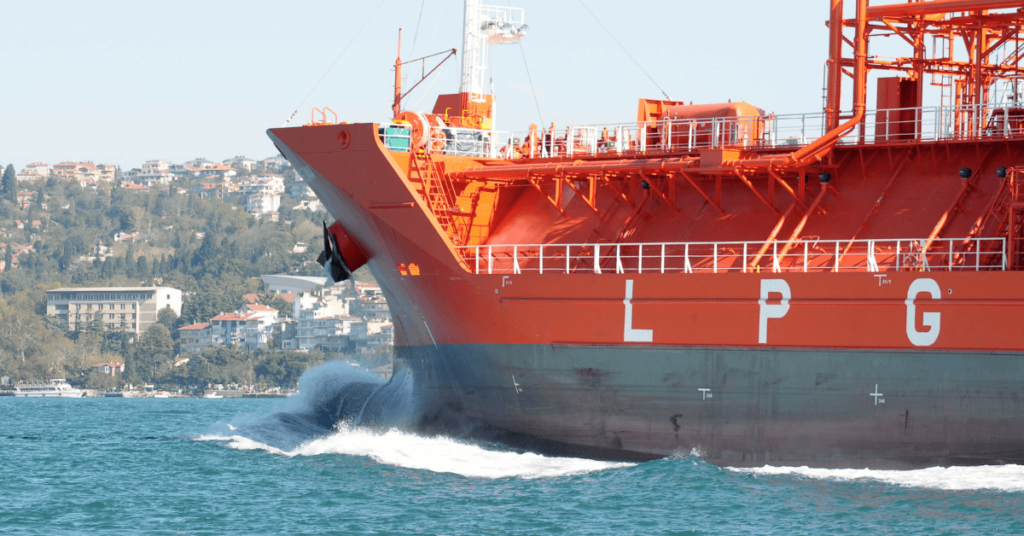
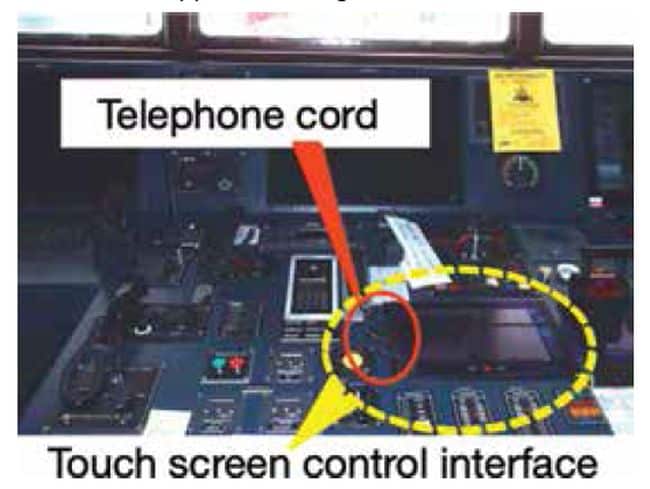
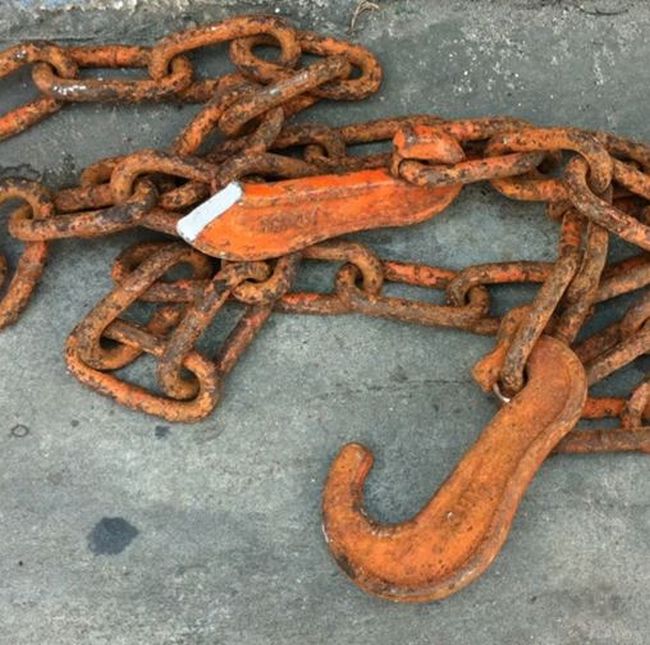
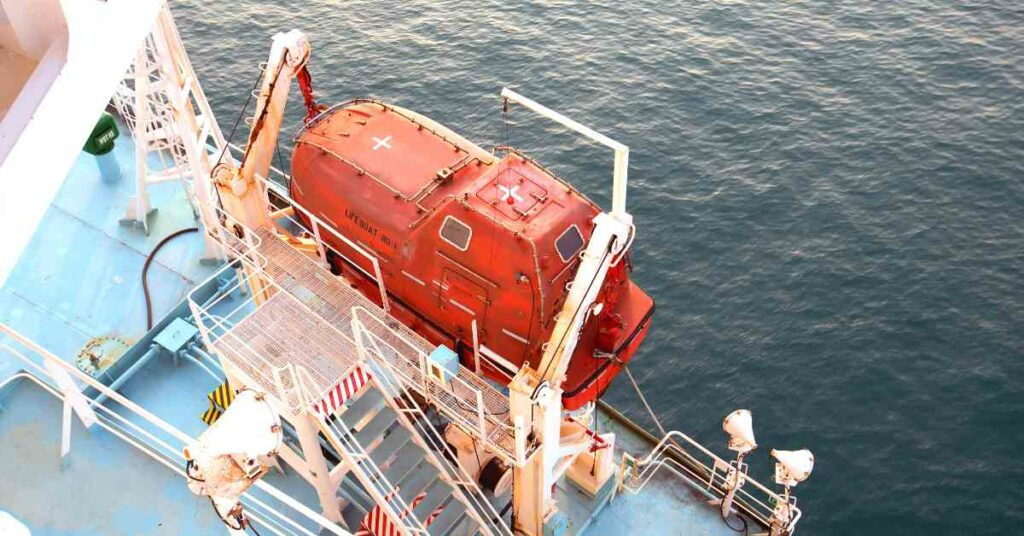
Dear Raunek
continue your good work.
Regards
N Shankar